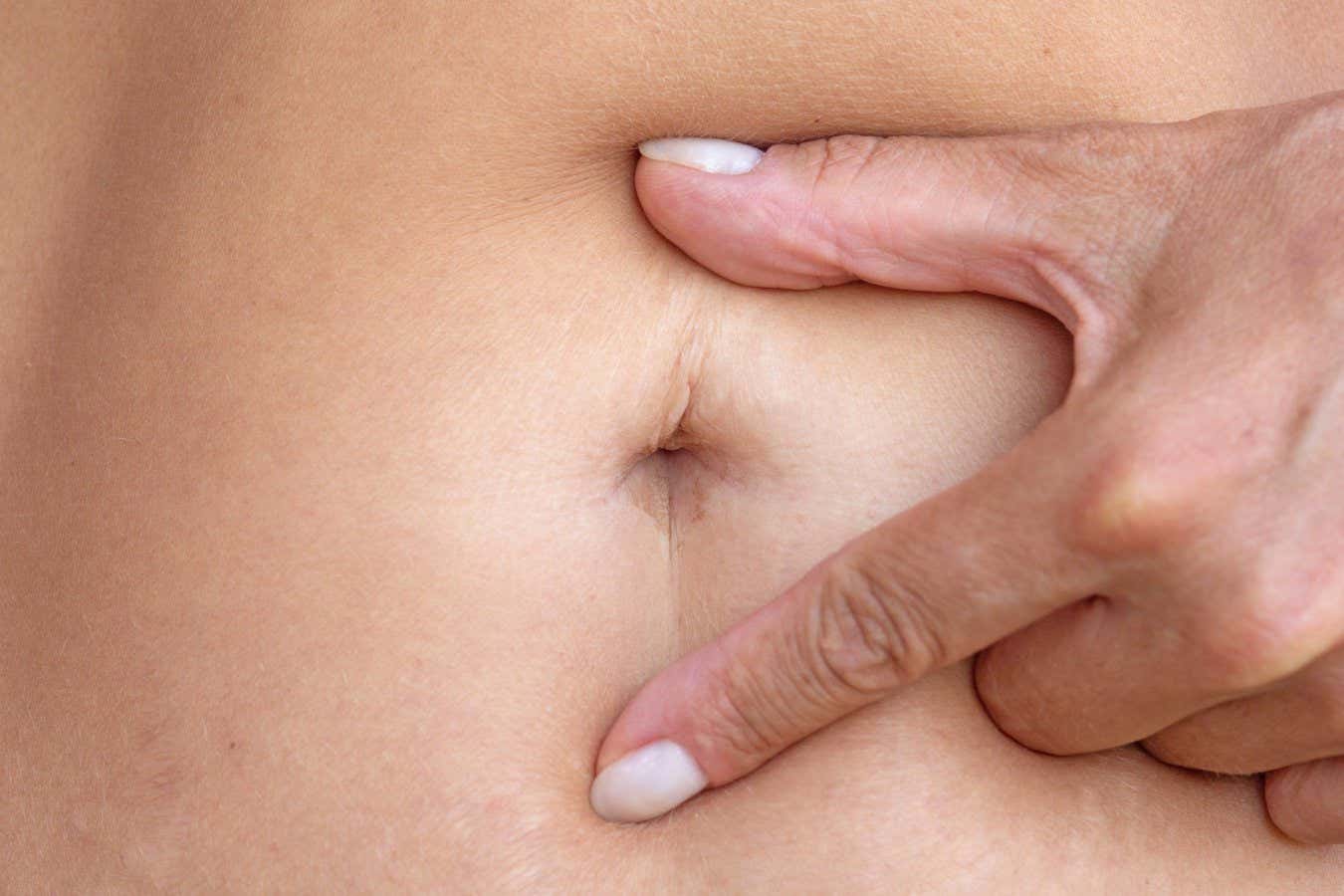
Why do most people have an “innie” belly button?
Tatiana Gorbunova / Alamy
The belly button, it turns out, is one of the least-studied parts of the human body. But one of its great mysteries may now have been solved – why most people have an innie, or concave belly button. This may be due to a previously unknown structure that pulls the belly button inwards.
The discovery arose when a team of researchers was trying to determine the best techniques for abdominal and hernia repair surgeries, which often involve incisions to the belly button, also known as the umbilicus or navel.
In particular, the researchers wanted to reduce the incidence of what are known as “umbilical incisional hernias”, where muscle weakness caused by previous surgery can lead to a bulge in the belly button when abdominal tissue tries to push through.
Satoru Muro at the Institute of Science Tokyo in Japan says in spite of the fact everyone has one and sees it almost every day, surprisingly, the anatomy of the umbilicus is almost “completely unreported”. The team did a detailed microscopic analysis of the region around the belly button on five donated human bodies and then built a 3D model of the structure.
A belly button is the remnant of the fetal umbilical cord, which protrudes through the abdominal wall to connect to the placenta until birth. After birth, in around 90 percent of people, the umbilicus scar heals into a concave divot. But Muro says the team discovered a “fibrous, tunnel-like structure” immediately beneath the umbilical skin that continues “seamlessly” into the deep tissues. These deep tissues, the abdominal fascia, stabilise the abdomen and hold our organs in place.
“The structure is composed of densely-oriented collagen fibres arranged circumferentially like a sleeve, which we have named the ‘umbilical sheath’,” he says. “This sheath appears to anchor the umbilical depression to the deep fascia in all directions.” This helps maintain the characteristic inward shape of belly buttons.
However, the team wasn’t able to study anyone with an “outie”, so the members say more work will be needed to understand how the umbilical sheath varies in different individuals.
“Individual differences in the development or robustness of the umbilical sheath could contribute to outward-projecting umbilici,” says Muro.
Kat Sanders at the University of Sydney in Australia says the belly button has definitely been a neglected part of the human anatomy. But further research will be needed, as five subjects is not a large enough number to generalise about everyone’s navels.
“The paper is shining light on a part of our anatomy that we haven’t looked at much, and obviously there’s lots of surgical implications for the region because it’s used quite frequently in laparoscopic surgeries,” Sanders says.
Michelle Moscova at the University of New South Wales in Australia says this research helps us understand what reinforces the belly button structurally and, possibly, how to do keyhole surgery more safely.
“One relatively common complication of abdominal surgeries is umbilical hernia,” says Moscova. “This is when parts of the abdominal contents, such as the gut, bulge out through the weak part of the abdomen. In umbilical hernia they bulge through the belly button.”
Topics:
Source link : https://www.newscientist.com/article/2498288-we-now-know-why-a-belly-button-becomes-an-innie/?utm_campaign=RSS%7CNSNS&utm_source=NSNS&utm_medium=RSS&utm_content=home
Author :
Publish date : 2025-09-30 20:27:00
Copyright for syndicated content belongs to the linked Source.